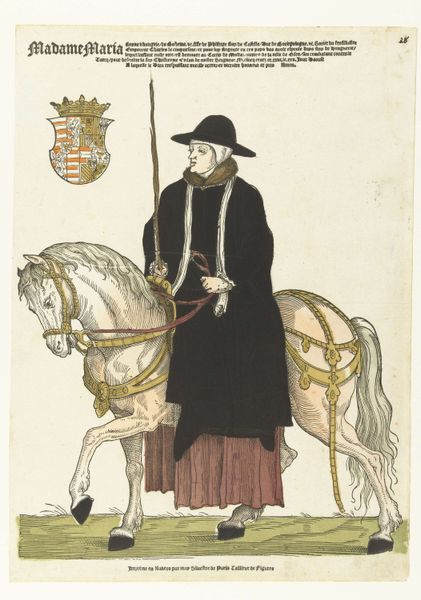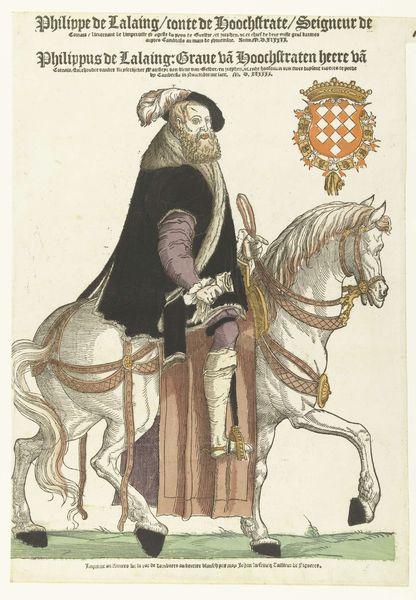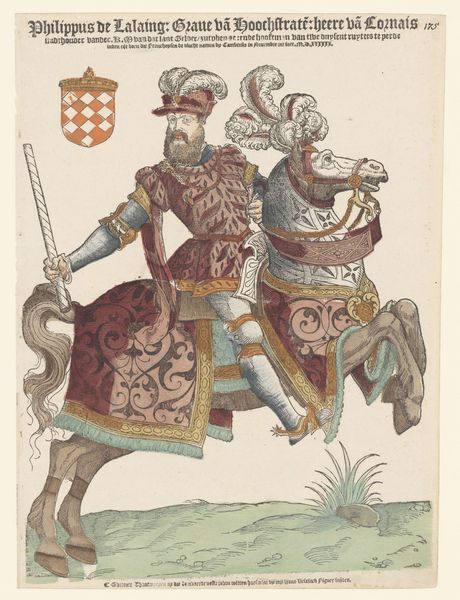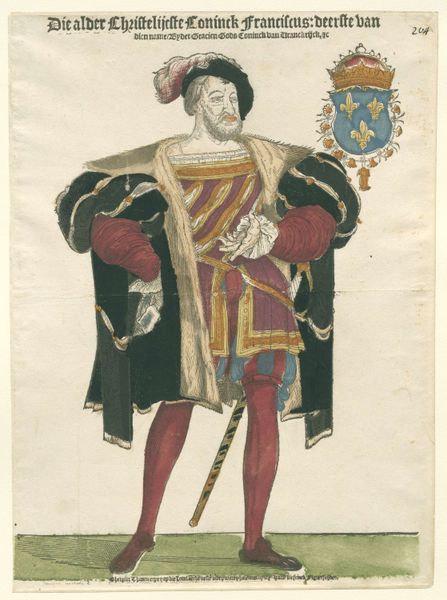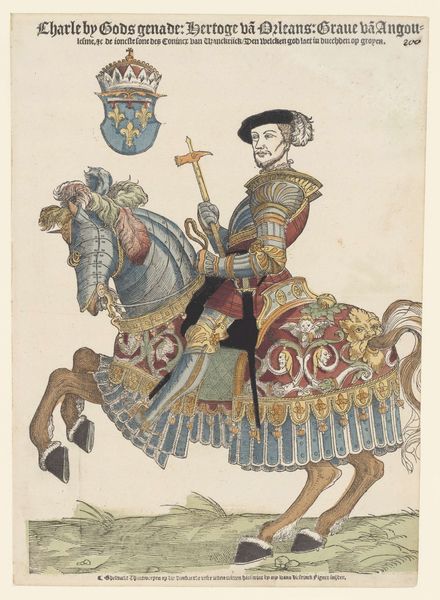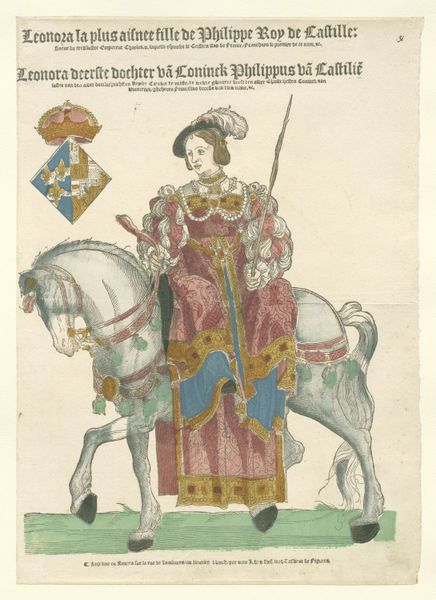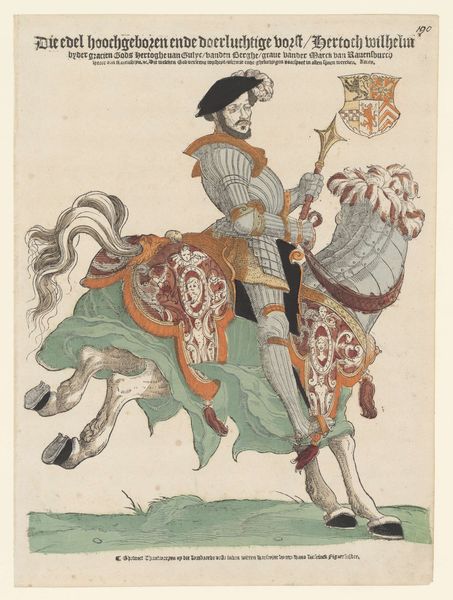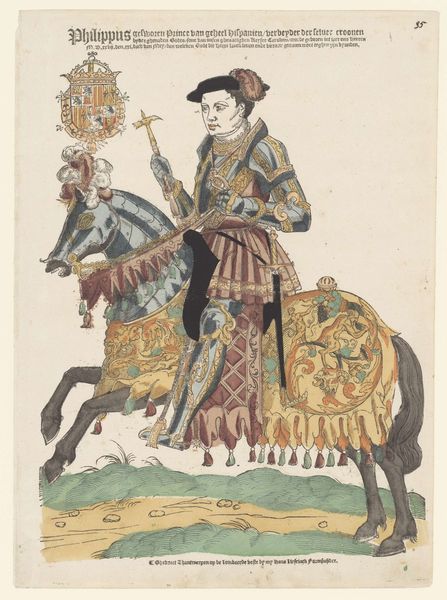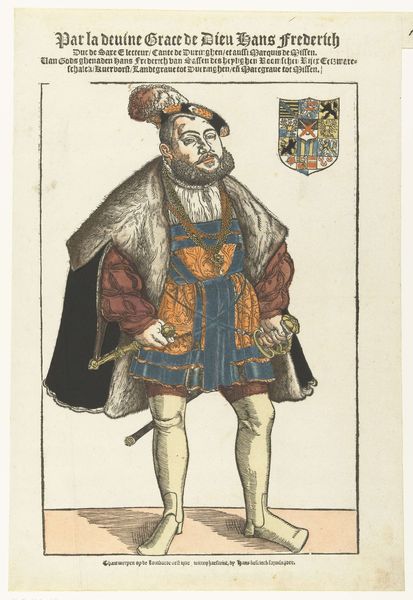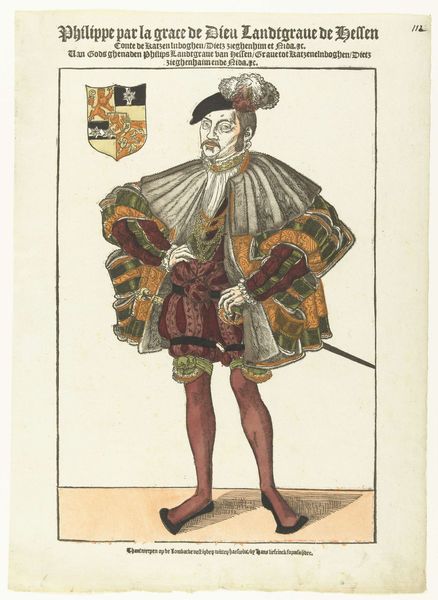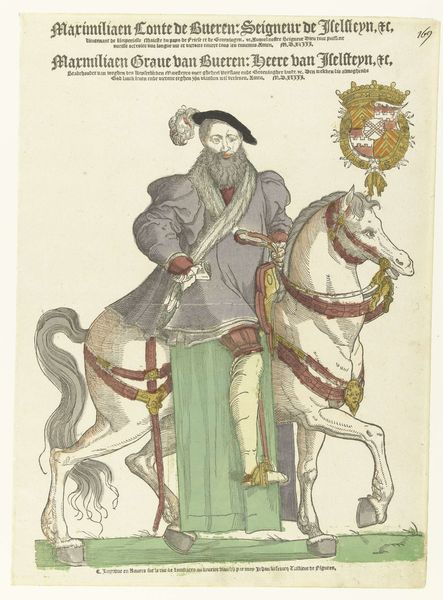
print, engraving
#
portrait
# print
#
traditional media
#
11_renaissance
#
history-painting
#
engraving
Dimensions: height 405 mm, width 300 mm
Copyright: Rijks Museum: Open Domain
Editor: So, this is Cornelis Anthonisz.’s "Portrait of John III of Portugal on Horseback," from sometime between 1540 and 1544. It's an engraving. The detail is incredible for a print! What strikes me most is the sheer opulence – you can practically feel the weight of those fabrics and jewels. What aspects of this engraving stand out to you? Curator: Well, focusing on the materiality of the piece, I see a careful calculation. Engravings like this, particularly portraits of rulers, were essentially early forms of mass media. How were these prints produced and distributed? Who had access to them? Consider the labor involved in creating the copperplate, the paper, the ink... Editor: That makes sense. It's easy to get caught up in the image and forget about the process. It also must have served to mass produce not only the image but also the persona of the King. It’s an early form of propaganda, right? Curator: Precisely. The distribution networks allowed the King to reach subjects in far-flung territories. Think about the economic forces at play: Who commissioned the print? Who profited from its sale? Also consider, in comparison to painted portraits only available to a few, the democratizing impact this accessible medium must have had at the time. Editor: So it's not just about the image, but about how that image was made, shared, and consumed? What would a consumer during that era have made of such a product? Curator: Exactly! Look closely at the texture achieved through the engraving. Think of the knowledge and craft required to manipulate the metal plate to such a high level of refinement. It challenges our modern notions of "high" and "low" art when we consider the immense skill invested in a seemingly reproducible image. This king presents himself as both a wealthy landowner, but in a novel portable format. The very availability of his persona broadcasts not only his own influence but that of the printers and distributors behind it all. Editor: I never considered the political statement implicit in making his image accessible like this. Curator: And understanding that relationship unlocks so much about the period’s economy and the ways rulers presented themselves. Editor: Thanks for the different insight! Considering this piece beyond the subject but as an instrument is really enlightening.
Comments
No comments
Be the first to comment and join the conversation on the ultimate creative platform.
